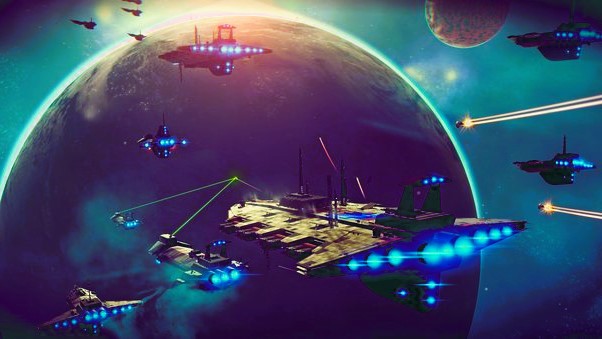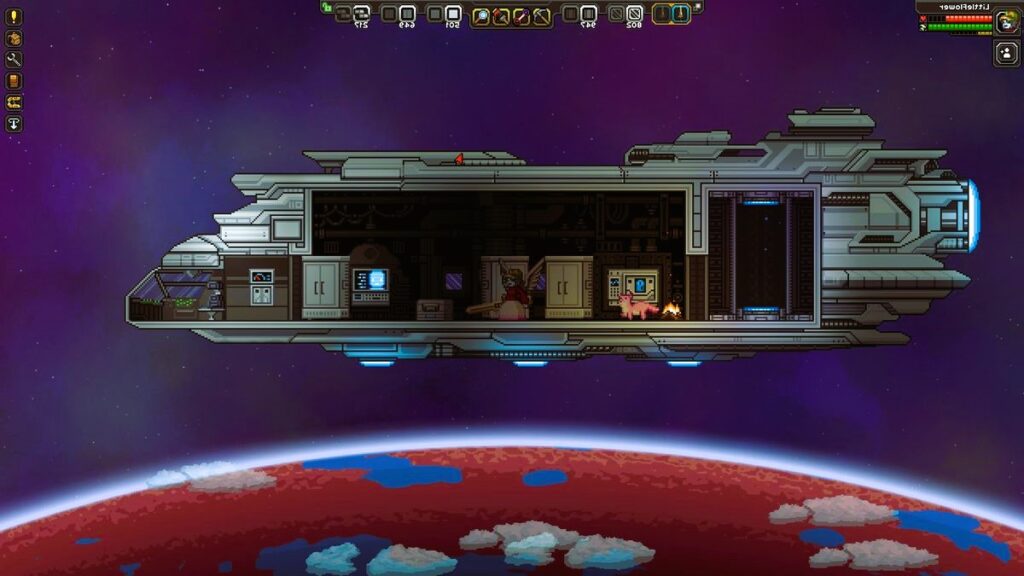From No Man’s Sky to Starbound: A Comparative Analysis of Open-World Space Exploration
Open-world space exploration games offer players the opportunity to embark on epic adventures across the cosmos, exploring vast galaxies, discovering new planets, and encountering strange creatures along the way. Two of the most popular titles in this genre are “No Man’s Sky” and “Starbound,” each offering its own unique take on the concept of open-world space exploration. In this article, we’ll take a closer look at these two games and conduct a comparative analysis to see how they stack up against each other.
No Man’s Sky:
“No Man’s Sky,” developed by Hello Games, burst onto the scene in 2016 with promises of an infinite, procedurally generated universe for players to explore. The game features a vast open world filled with billions of planets, each with its own unique ecosystem, flora, and fauna. Players take on the role of a spacefaring explorer equipped with a starship and a multi-tool, tasked with traversing the galaxy, gathering resources, and unraveling the mysteries of the universe.

One of the standout features of “No Man’s Sky” is its procedural generation system, which creates a virtually limitless number of unique planets for players to explore. Each planet is procedurally generated based on a set of algorithms, resulting in a diverse array of landscapes, weather patterns, and wildlife. From barren desert worlds to lush forested planets to toxic wastelands, the variety of environments in “No Man’s Sky” is truly staggering.
In addition to exploration, “No Man’s Sky” also features elements of survival and crafting, requiring players to manage resources such as oxygen, fuel, and ammunition as they journey through the cosmos. Players can mine resources from planets, trade with alien civilizations, and upgrade their equipment to improve their chances of survival in the harsh environment of space. Do you like the article? Read also about the Science behind space games.
Despite its initial controversy and criticism, “No Man’s Sky” has undergone significant updates and improvements since its release, adding new features, gameplay mechanics, and quality-of-life improvements based on player feedback. With its stunning visuals, expansive open world, and sense of endless possibility, “No Man’s Sky” continues to be a favorite among fans of open-world space exploration.
Starbound:
“Starbound,” developed by Chucklefish, offers a slightly different take on the open-world space exploration genre. In “Starbound,” players take on the role of a character stranded on a distant planet, tasked with exploring the galaxy, gathering resources, and uncovering the secrets of the universe. The game features a procedurally generated universe similar to “No Man’s Sky,” but with a greater emphasis on storytelling and progression.
Unlike “No Man’s Sky,” which focuses primarily on exploration and survival, “Starbound” features a stronger narrative element, with players embarking on quests, completing missions, and interacting with NPCs throughout the game world. Players can also build and customize their own bases, craft weapons and armor, and engage in combat with hostile creatures and enemy factions.
One of the standout features of “Starbound” is its deep crafting system, which allows players to gather resources from planets and use them to create a wide variety of items, structures, and equipment. Players can also discover and unlock new technologies as they progress through the game, unlocking new abilities and options for customization.
“Starbound” also features a multiplayer mode, allowing players to team up with friends and explore the galaxy together. The game’s multiplayer mode offers a shared universe where players can collaborate on building projects, embark on missions together, and engage in cooperative gameplay experiences.

Comparative Analysis:
Both “No Man’s Sky” and “Starbound” offer compelling experiences in the realm of open-world space exploration, but they cater to slightly different audiences and play styles. “No Man’s Sky” excels in its vastness and sense of scale, offering players an endless universe to explore and discover. The game’s procedural generation system ensures that no two planets are alike, keeping gameplay fresh and unpredictable.
On the other hand, “Starbound” offers a more structured experience with a stronger emphasis on narrative and progression. The game’s focus on quests, missions, and crafting gives players a sense of purpose and direction as they journey through the galaxy. The addition of multiplayer functionality adds another layer of depth to the experience, allowing players to team up with friends and explore together.
In terms of visuals, both games feature colorful and vibrant art styles that bring their respective universes to life. “No Man’s Sky” is known for its stunning vistas and realistic planetary landscapes, while “Starbound” offers a charming pixel art style that evokes nostalgia for classic 2D platformers.
In conclusion, both “No Man’s Sky” and “Starbound” offer unique and engaging experiences in the realm of open-world space exploration. Whether you prefer the endless exploration of “No Man’s Sky” or the structured progression of “Starbound,” there’s something for everyone to enjoy in these two standout titles.
For more information on open-world space exploration games, be sure to check out the Fandom’s space exploration gaming wiki. Whether you’re a fan of endless exploration or structured progression, there’s a space exploration game out there for you.